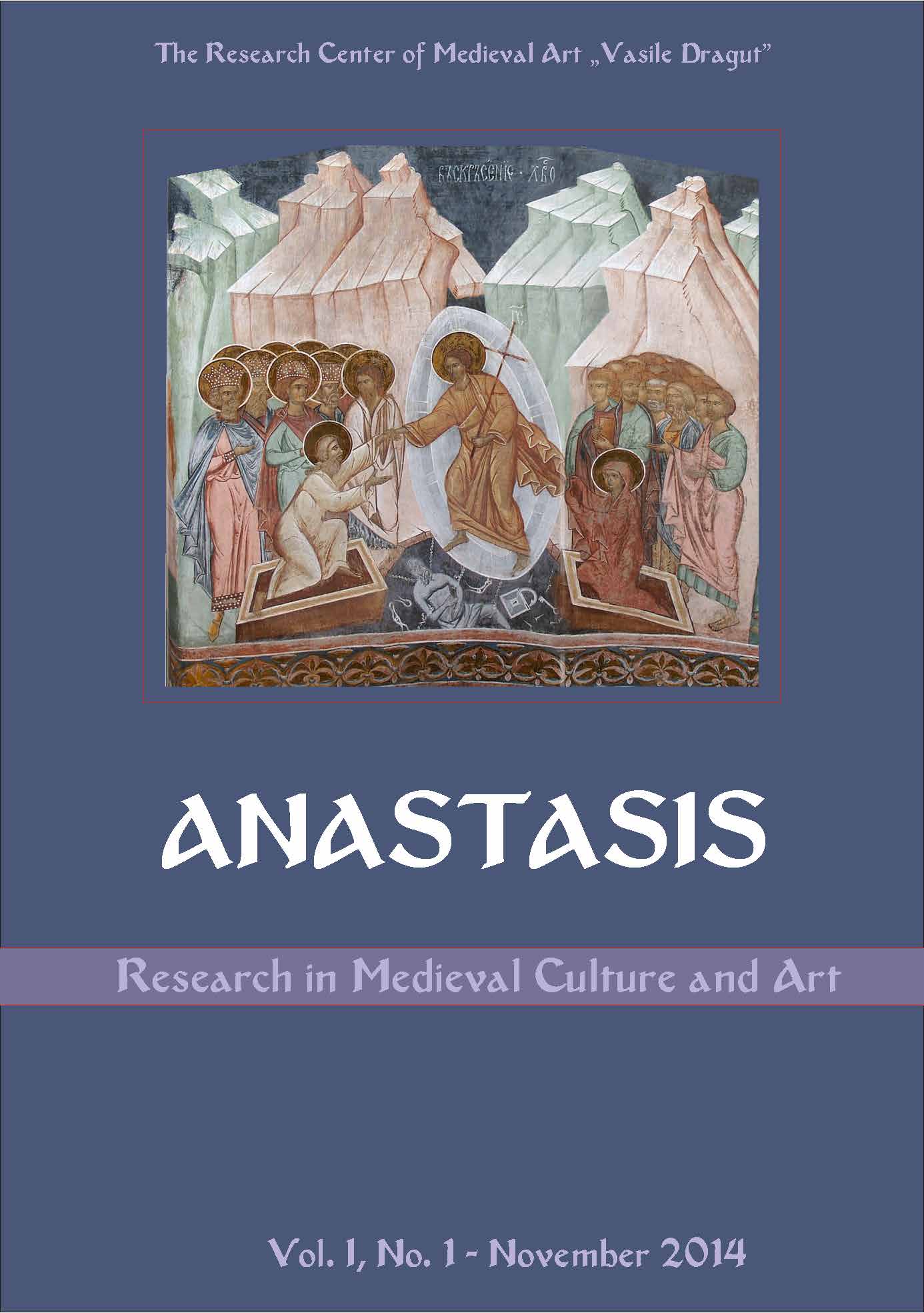Les roues du ciel de Sucevița. Brève investigation multidisciplinaire sur un élément plastique décoratif de la fresque intérieure de l’église « La Résurrection de Jésus Christ » du monastère de Sucevița
The Wheels of the Sky of Suceviţa. Brief Multidisciplinary Investigation over a Decorative Artistic Element of the Interior Fresco of the Church The Resurrection of Jesus Christ of the Monastery of Suceviţa
Author(s): Emilian Adrian GavrileanSubject(s): History, Fine Arts / Performing Arts, Architecture, Visual Arts, Middle Ages, Theology and Religion
Published by: Editura ARTES
Keywords: Suceviţa; sky; circle; stars; wheels; investigation; multidisciplinary
Summary/Abstract: In the study Suceviţa’s wheels of the sky I have undertaken a multidisciplinary investigation of some ornamental elements like the stars painted on the inside wall painting of “Învierea Domnului” Church of Suceviţa Monastery and which are quite common elements at first sight in the sacred art of the Romanian Middle Ages. These stars are spectacular due to their size, spontaneity and quantity of design in the „sky” and maybe, especially due to the structure and the painting manner chosen by painters. Suceviţa’s sky is unique among all the important churches and monasteries built by voivodes between the 15th and 17th century in the North of Moldova: the painters Ioan and Sofronie painted symmetrically lots of big stars with angles formed of six rays as thin from center to the end. By using a nail and a wire or a compass they sketched equally spaced circles on which they traced the angles of the stars. After the recent restoration we do not know for sure if the circles were also golden circles as the stars but with the lapse of time they have become noticeable and now we have the so-called wheels of the sky. “Suceviţa’s sky” uniqueness lies not only in the technical innovation regarding star representation but also in its ability to raise some questions: are the stars inscribed in the circle pure ornamental elements taken from somewhere or are they symbols within the context of the monumental assembly? Is their source of inspiration only technical or also ideological? Why take pains to sketch some circles which would become invisible? Could this have been sketched only to exercise a new technique ? If they sketched the circles only as a guide mark in order to paint the stars symmetrically, why did they leave the circles without covering them somehow? Were the painters so unexperienced or careless that they didn’t realise that in time the effects of such technique would become noticeable? Or maybe was this done on purpose? If that was the case, what was the source of inspiration and what is the message? We can answer these questions only by undertaking an investigation on this topic, especially as the whole painting of Suceviţa is the representation of an organic mix of tradition, influences and original creation. The multidisciplinary method allows me to gather information from certain fields like wall painting techniques and restoration, history of medieval art, history of Christian art, dogmatic and symbolic theology of byzantine tradition, ethnology, mythology and native traditions in order to create an overall perspective on this ornamental element of Suceviţa’s wall painting. This study may be further developed, and, thanks to the multidisciplinary approach of investigation, the issues raised here – regarding an apparently common ornamental element of wall painting of the Romanian Middle Age – may lead to an unexpected outlook on the medieval art research from a modern point of view.
Journal: Anastasis Research in Medieval Culture and Art
- Issue Year: I/2014
- Issue No: 1
- Page Range: 179-204
- Page Count: 26
- Language: French

